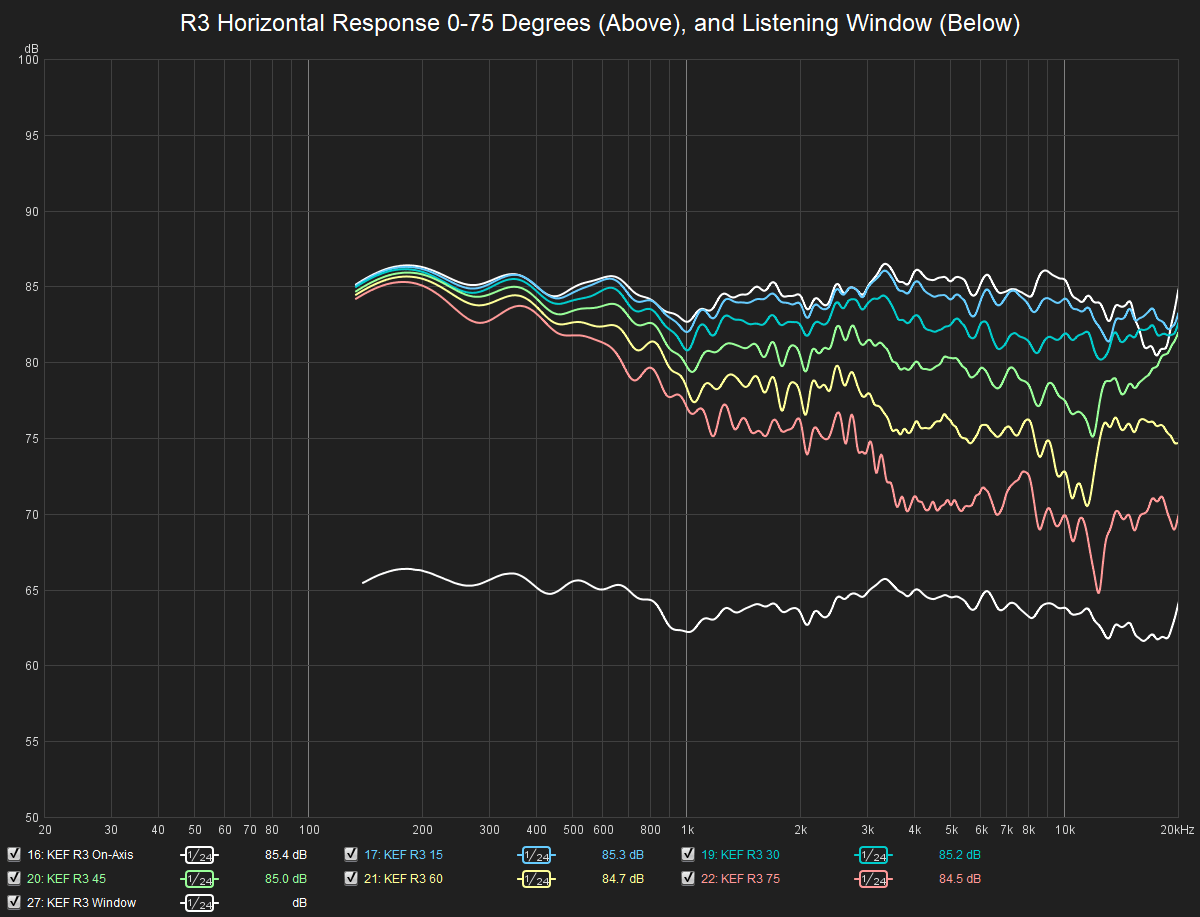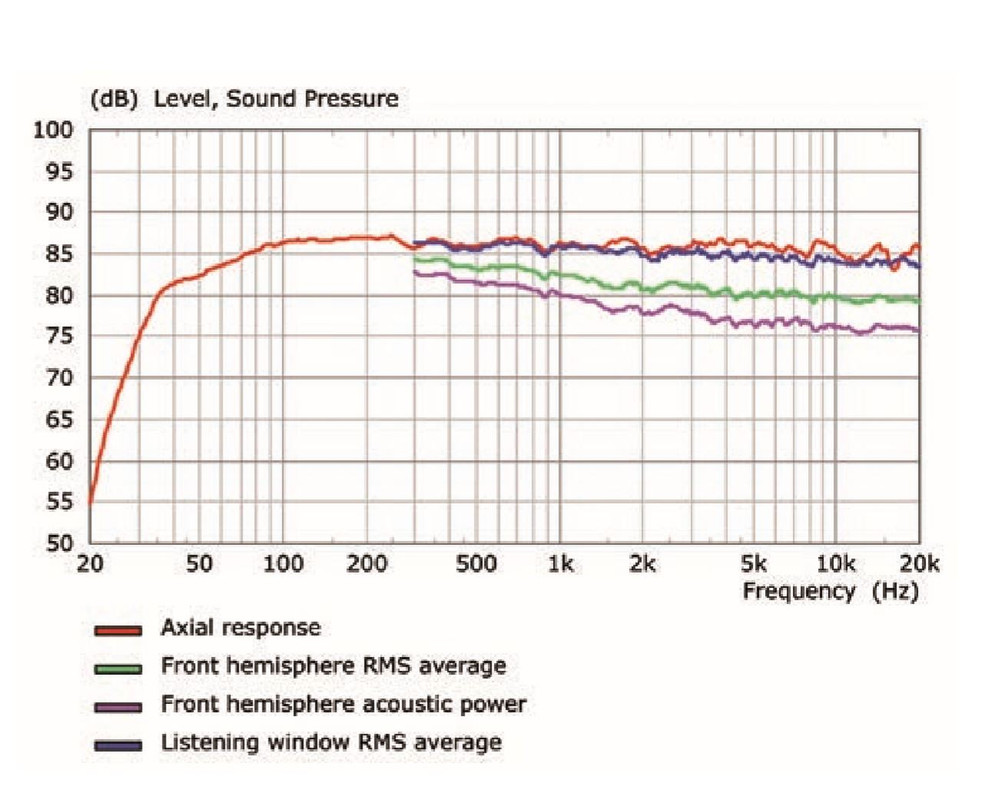nightfishing
Member
- Joined
- Jan 17, 2019
- Messages
- 32
- Likes
- 25
This is getting very tempting. I ve seen some deals on them this morning at about 1350e the pair. My dilemma right now for the living room is this or the LS50w. Considering i would rather not have a sub but needs a new amp with the R3.
Hey, I'm the reviewer - I didn't compare it too much the LS50W in the review because I didn't want to make it too long, but I did actually do some back-and-forth sighted comparisons. My basic summary of differences would be:
- LS50W has a bit more bass impact, but the R3 extends a bit lower - a wash overall. I believe this showed up in measurements too, though I'm not at my computer right now.
- The R3 has more refined treble and slightly better tonality overall, measures a bit more flat.
- The LS50W has slightly better imaging - instruments 'snap' into place a bit more This surprised me a bit, but I suspect this is because of the phase correction on the LS50W. When this feature is turned off they're pretty much equal or maybe the R3 has a slight edge
- I'd give the R3 the slight advantage overall, but that impression may very well be skewed by the fact that are newer. They're more similar than different. I'd base the decision more on whether you want active or passive or even aesthetics than anything else.
Thanks a lot, this is the kind of comparison i was looking for. I would have expected the R3 to have a significant edge in the bass department overall but considering what they ve done with all the dedicated electronic in the LS50W i can see you why it would be like that. You other points make a lot of sense.Hey, I'm the reviewer - I didn't compare it too much the LS50W in the review because I didn't want to make it too long, but I did actually do some back-and-forth sighted comparisons. My basic summary of differences would be:
- LS50W has a bit more bass impact, but the R3 extends a bit lower - a wash overall. I believe this showed up in measurements too, though I'm not at my computer right now.
- The R3 has more refined treble and slightly better tonality overall, measures a bit more flat.
- The LS50W has slightly better imaging - instruments 'snap' into place a bit more. This surprised me a bit, but I suspect this is because of the phase correction on the LS50W. When this feature is turned off they're pretty much equal or maybe the R3 has a slight edge.
- I'd give the R3 the slight advantage overall, but that impression may very well be skewed by the fact that are newer. They're more similar than different. I'd base the decision more on whether you want wireless active vs passive or even aesthetics than anything else.
It would be interesting to know how you would compare them in a non-sighted comparative test.
As for sighted test, tt would also be interesting that you did roomEQ before that so you can compare them in a manner @mitchco did when he was comparing LS50+sub vs his JBLs.
Thanks a lot, this is the kind of comparison i was looking for. I would have expected the R3 to have a significant edge in the bass department overall but considering what they ve done with all the dedicated electronic in the LS50W i can see you why it would be like that. You other points make a lot of sense.
Unfortunately they're already boxed up to go back to KEF, and I'm not really equipped for blind tests, but I'll keep that in mind.
Yeah, the LS50W's DSP mostly balances things out. You can kind of see what I'm talking about in KEFs specs too. The LS50W is more linear to the low bass but drops off quickly in the lowest region, while the R3 has a more gradual roll-off.
Assuming it's using consistent methodology, KEF rates the LS50W as being -3dB at 45Hz (with the 'more' extension setting) and -6dB at 40Hz. Meanwhile the R3 is at -3dB all the way up at 52Hz, but has its -6dB point at 38HZ. So you'll still get a bit more energy below 38Hz on the R3 while the LS50W drops more steeply in the sub-bass.
I do level-match with my Umik as best I can, but not sure room EQ is a good idea as that's not how the majority of people will listen and you're almost certainly modifying the tonality of the speakers.Never mind the blind tests, but I think that a fair sighted in-room comparison requires both speakers to be roomEQ-ed and level matched.
I do level-match with my Umik as best I can, but not sure room EQ is a good idea as that's not how the majority of people will listen and you're almost certainly modifying the tonality of the speakers.
This due to the stereo system errors.


Yes im also one of those who don't like to room EQ speakers, specially speakers with naturally an excellent response such as the R3 with no obvious issues, i think it is skewing up the good parts more than anything.I do level-match with my Umik as best I can, but not sure room EQ is a good idea as that's not how the majority of people will listen and you're almost certainly modifying the tonality of the speakers.

Yes im also one of those who don't like to room EQ speakers, specially speakers with naturally an excellent response such as the R3 with no obvious issues, i think it is skewing up the good parts more than anything.
Their Spinorama look great, so EQing this bothers me even more. Even your measurements in real world situation show, it's still really good on axis and at several angles.
What are we really EQing in the end is a sum of all the speaker products, wich is something our brain might be able sort out ourselves to some extent, also dependent to levels.

But i would really like to hear someone like Mr Toole about this specific case.
But i would really like to hear someone like Mr Toole about this specific case.
